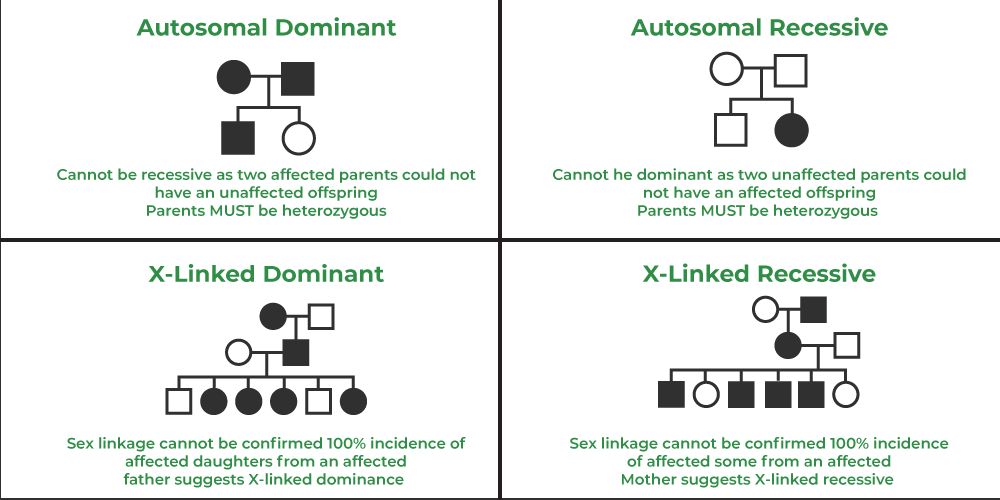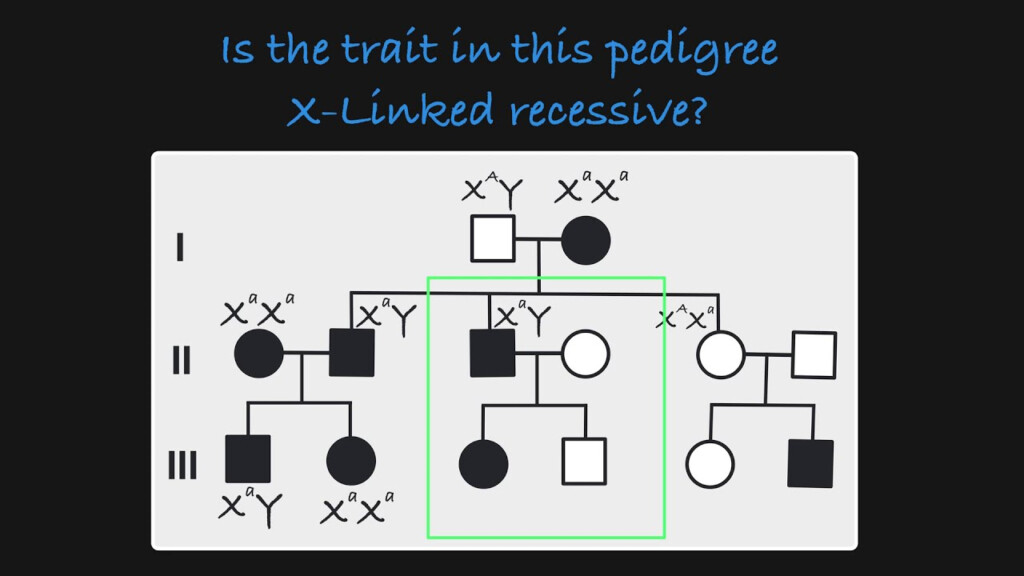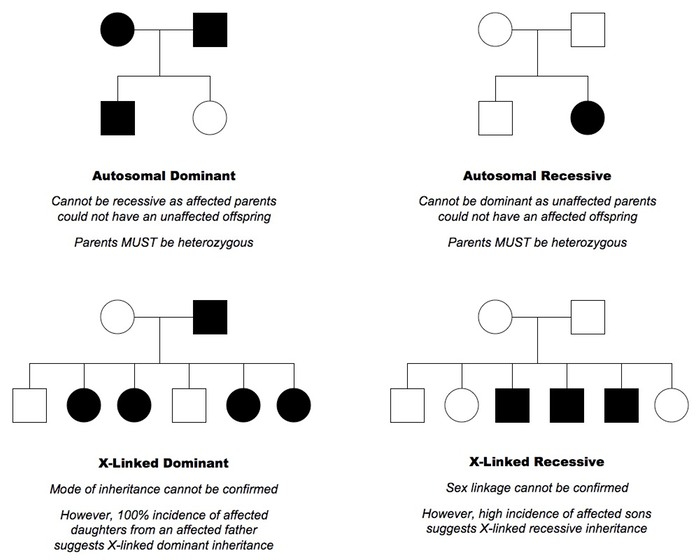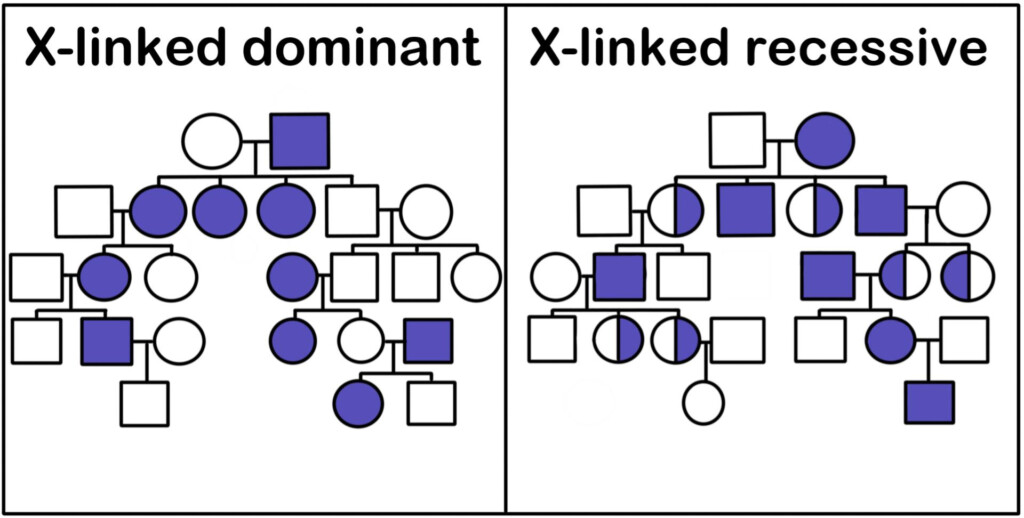Autosomal recessive inheritance is a genetic pattern where two copies of a gene must be mutated in order for a trait or disorder to be expressed. This means that both parents must be carriers of the mutated gene in order for their child to inherit the disorder. In an autosomal recessive pedigree chart, affected individuals are usually shown as filled-in symbols, while carriers are represented by half-filled symbols. This type of inheritance pattern can skip generations, as carriers may not exhibit any symptoms of the disorder.
When analyzing an autosomal recessive pedigree chart, it’s important to look for patterns of inheritance within a family tree. By tracing the transmission of the mutated gene through multiple generations, genetic counselors can better understand the risk of passing on the disorder to future offspring. Testing for carrier status can also help individuals make informed decisions about family planning and genetic counseling.
Autosomal Recessive Pedigree Chart Vs Xlinked
The Fundamentals of X-linked Pedigree Chart
X-linked inheritance refers to genes located on the X chromosome, one of the two sex chromosomes. This type of inheritance pattern can be either recessive or dominant, depending on the specific gene involved. In an X-linked pedigree chart, affected individuals are typically shown as filled-in squares (for males) or circles (for females), while carriers may be represented by a dot inside the symbol.
Unlike autosomal inheritance, X-linked traits are more likely to be expressed in males, as they only have one X chromosome. Females, on the other hand, have two X chromosomes, which means they are more likely to be carriers of X-linked disorders. Genetic testing can help identify carriers and affected individuals, allowing for better management and prevention of X-linked disorders within families.
Key Differences Between Autosomal Recessive and X-linked Pedigree Charts
One of the main differences between autosomal recessive and X-linked pedigree charts is the inheritance pattern. While autosomal recessive traits require two mutated copies of a gene (one from each parent), X-linked traits are carried on the X chromosome and can be passed down differently between males and females. Additionally, autosomal recessive disorders are more likely to affect both males and females equally, while X-linked disorders may show a higher prevalence in males.
Understanding the differences between autosomal recessive and X-linked pedigree charts is essential for genetic counselors, healthcare providers, and individuals seeking to learn more about their family history and genetic risks. By analyzing pedigrees and identifying patterns of inheritance, we can better predict the likelihood of passing on genetic disorders and make informed decisions about genetic testing and family planning.
Download Autosomal Recessive Pedigree Chart Vs Xlinked
X Linked Gene
Autosomal Recessive Inheritance Pedigree
Autosomal Recessive Pedigree Chart
For Each Of The Three Pedigrees Below Determine The Probable Mechanism




